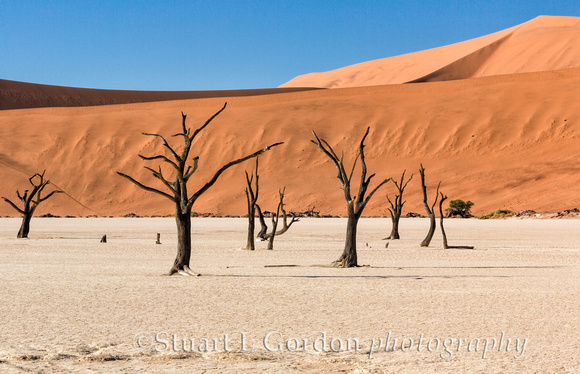Namibia_Nov032014_0346
One of the most iconic sites within Namibia, Africa is Deadvlei, a white clay pan located near Sossusvlei inside the Namib-Naukluft Park. DeadVlei means "dead marsh." Dead Vlei has been claimed to be surrounded by the highest sand dunes in the world, the highest reaching 300-400 meters (350m on average, named "Big Daddy" or "Crazy Dune"), which rest on a sandstone terrace.
The clay pan was formed after rainfall, when the Tsauchab river flooded, creating temporary shallow pools where the abundance of water allowed camel thorn trees to grow. When the climate changed, drought hit the area, and sand dunes encroached on the pan, which blocked the river from the area.
The trees died, as there no longer was enough water to survive. The remaining skeletons of the trees, which are believed to have died 600-700 years ago (AD 1340- 1430), are now black because the intense sun has scorched them. Though not petrified, the wood does not decompose because it is so dry.


